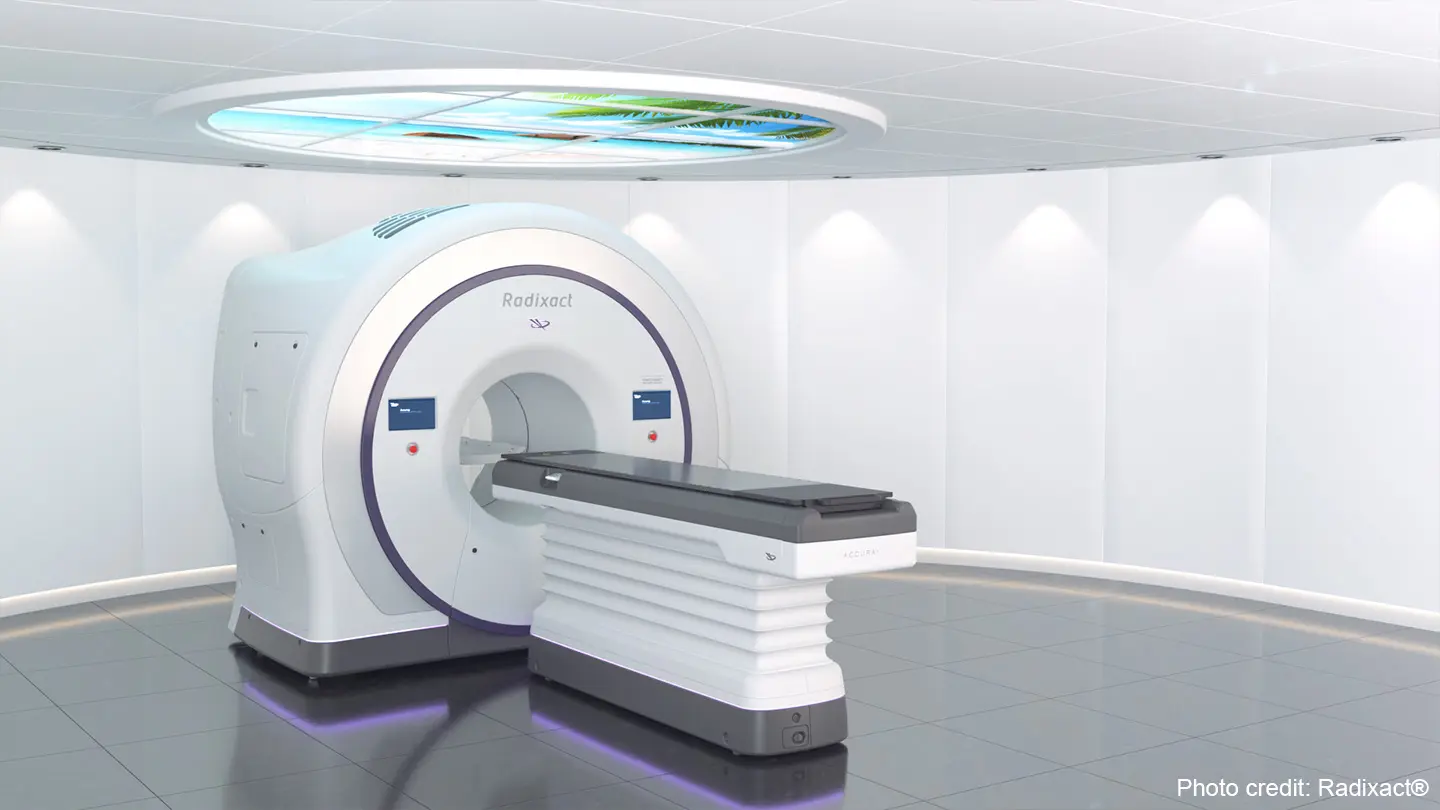Tomotherapy Radiation
What is tomotherapy?
Tomotherapy is a specialised radiation machine designed specifically to deliver intensity-modulated radiation therapy (IMRT). IMRT allows your doctor to target painless and precise radiation beams onto the diseased tissue, and reduce radiation damage to surrounding healthy tissues.
Before starting tomotherapy treatment, you will undergo a computerised tomography (CT) simulation scan. The scan allows your doctor and medical team to plan the radiation delivery precisely.
Once you start tomotherapy treatment, you will undergo a quick CT scan in the tomotherapy machine before each treatment session. This enables the team to:
- Confirm the location of your tumour using image guidance
- Deliver customised and focused radiation beams to the region of the tumour as accurately as possible on a daily basis.
Why do you need tomotherapy?
Tomotherapy is versatile and can be used to treat all areas of the body. It offers several advantages, such as:
- Real-time imaging of tumours, which allows the team to be as accurate as possible for the daily treatment sessions.
- Highly precise radiation targeting that can deliver radiation according to the unique shape of specific tumours.
- Higher doses of radiation, which potentially increases the treatment's effectiveness
- Reduced radiation exposure in healthy organs and tissues, which decreases the likelihood of side effects and complications.
Tomotherapy is used to treat patients with hard-to-reach tumours that are deep in the tissues or near important healthy tissues. In certain situations, it allows the medical team to kill the tumour without removing the organs affected by it.
Cancers that can benefit from tomotherapy include:
- Lung cancer
- Brain tumours
- Head and neck cancers
- Cancers in the pelvis, such as
Tomotherapy is also potentially beneficial in certain cases of lymphoma, myeloma and breast cancer. It can be used to treat cancer in children (paediatric cancer) and adults.
Who should not undergo tomotherapy?
Due to the high doses of radiation involved in tomotherapy, it is unsuitable for pregnant women. Radiation therapy can cause miscarriage, birth defects and a higher risk of paediatric cancer.
Also, tomotherapy may not be able to treat some superficial skin cancers.
What are the risks and complications of tomotherapy?
Tomotherapy is a relatively safe procedure. Nonetheless, many patients may experience temporary side effects such as:
- Fatigue
- Nausea
- Skin soreness around the treatment areas.
These side effects should wear off gradually as the treatment ends.
Other side effects will depend on the area of your body that is receiving treatment. Your doctor will be able to give you more information relevant to your condition.



